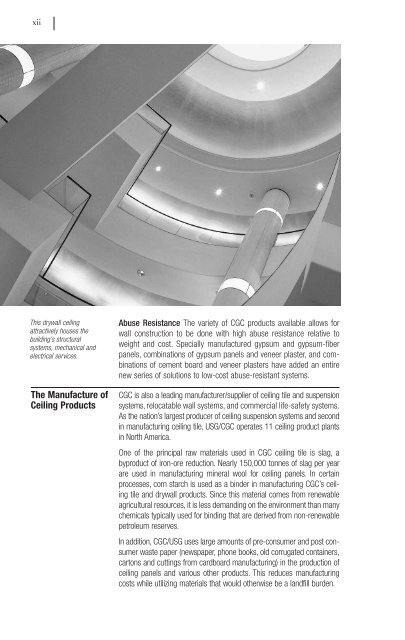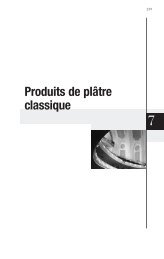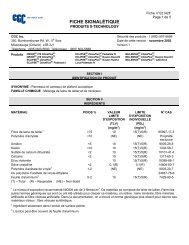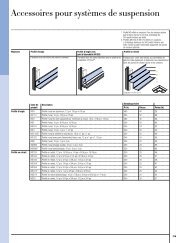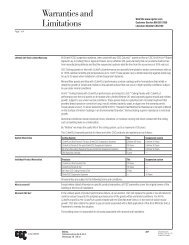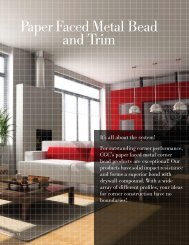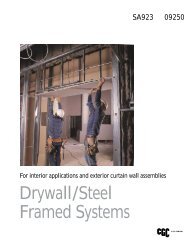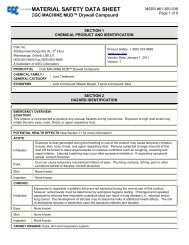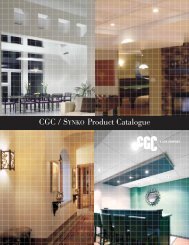The Gypsum Construction Handbook - CGC
The Gypsum Construction Handbook - CGC
The Gypsum Construction Handbook - CGC
You also want an ePaper? Increase the reach of your titles
YUMPU automatically turns print PDFs into web optimized ePapers that Google loves.
xii<br />
This drywall ceiling<br />
attractively houses the<br />
building’s structural<br />
systems, mechanical and<br />
electrical services.<br />
Abuse Resistance <strong>The</strong> variety of <strong>CGC</strong> products available allows for<br />
wall construction to be done with high abuse resistance relative to<br />
weight and cost. Specially manufactured gypsum and gypsum-fiber<br />
panels, combinations of gypsum panels and veneer plaster, and combinations<br />
of cement board and veneer plasters have added an entire<br />
new series of solutions to low-cost abuse-resistant systems.<br />
<strong>The</strong> Manufacture of <strong>CGC</strong> is also a leading manufacturer/supplier of ceiling tile and suspension<br />
Ceiling Products systems, relocatable wall systems, and commercial life-safety systems.<br />
As the nation’s largest producer of ceiling suspension systems and second<br />
in manufacturing ceiling tile, USG/<strong>CGC</strong> operates 11 ceiling product plants<br />
in North America.<br />
One of the principal raw materials used in <strong>CGC</strong> ceiling tile is slag, a<br />
byproduct of iron-ore reduction. Nearly 150,000 tonnes of slag per year<br />
are used in manufacturing mineral wool for ceiling panels. In certain<br />
processes, corn starch is used as a binder in manufacturing <strong>CGC</strong>’s ceiling<br />
tile and drywall products. Since this material comes from renewable<br />
agricultural resources, it is less demanding on the environment than many<br />
chemicals typically used for binding that are derived from non-renewable<br />
petroleum reserves.<br />
In addition, <strong>CGC</strong>/USG uses large amounts of pre-consumer and post consumer<br />
waste paper (newspaper, phone books, old corrugated containers,<br />
cartons and cuttings from cardboard manufacturing) in the production of<br />
ceiling panels and various other products. This reduces manufacturing<br />
costs while utilizing materials that would otherwise be a landfill burden.


